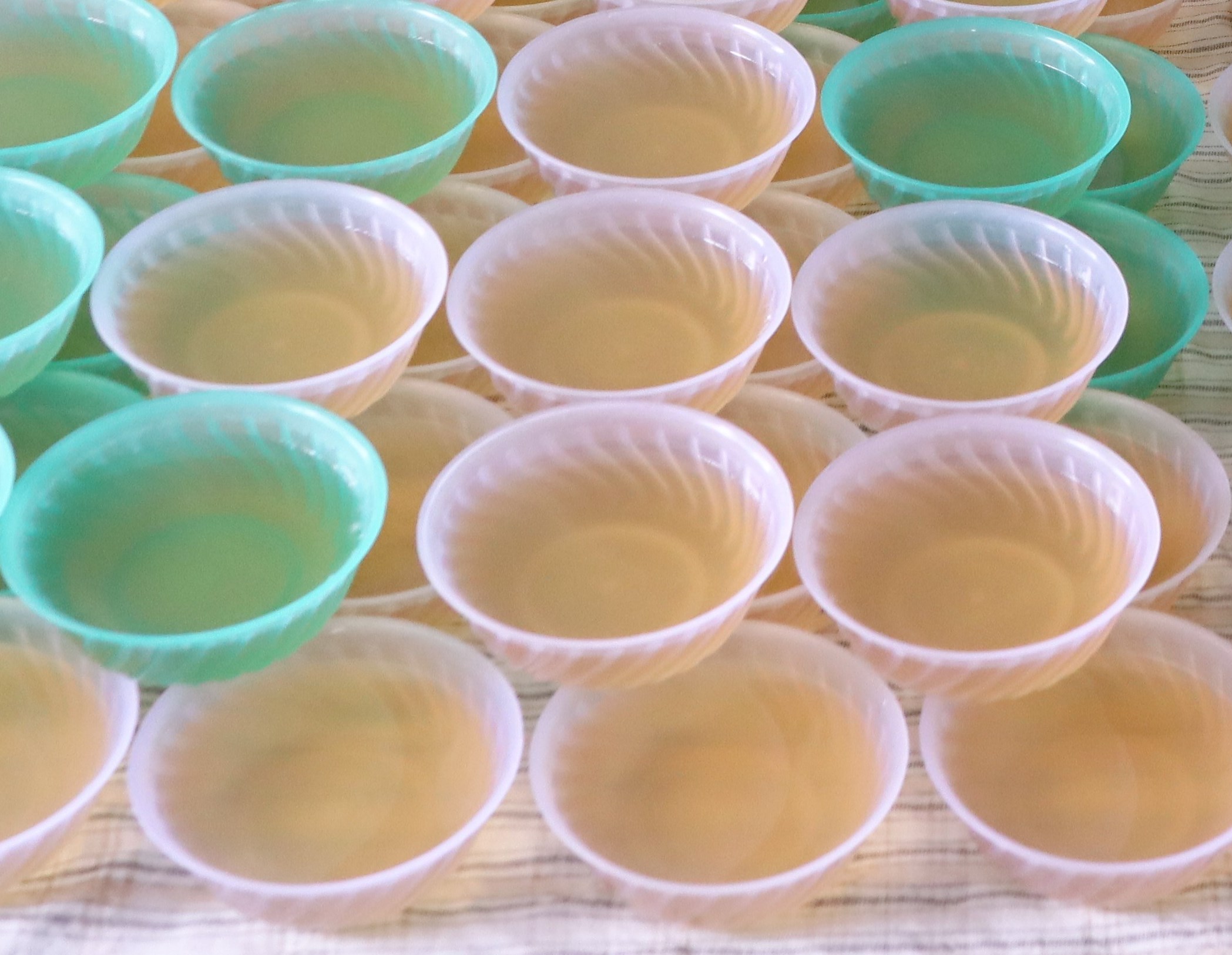'Xu xoa'- the delicacy of childhood's summer days
Almost no one knows when ‘xu xoa’ was born, but for residents in the Central region, the image of a street vendor swinging a bamboo frame to hold loads at the end of a carrying pole through the village streets with the phrase" Does anyone eat xu xoa ?" has become a memorable part of childhood days.
 |
| Mr Nguyen Ngoc Thoi's furnace has always been on fire from 1 to 2 a.m to make 500 bowls of 'xu xoa' on a daily basis. Photo: N.H |
Xu xoa…
In the past, street vendors swinging a bamboo frame holding loads of ‘xu xoa’ at the end of a carrying pole through the village streets usually stopped at the doorstep of their customers’ houses to put down the loads, pull the wooden small chair to sit, then quickly grab a small bowl, cut ‘xu xoa’ into small pieces and pour ginger-scented golden sugar water on the surface of the bowl.
It is understandable that people from other localities will be surprised by the way Quang Nam people call this dish. Sometimes, it is called "xu xoa", “ xoa xoa", or even "xu xa, xa xa”.This is because of the diverse local pronunciation that transforms. However, no matter what name it is called, it is a snack cooked from seaweed clinging to rocks or in estuaries, sea gates and brackish waters.
The season of ‘xu xoa’ has regularly started from December to May of the lunar calendar so sellers often have to buy and store dried ‘xu xoa’ to cook all year round. In the past, life in villages was very poor so eating a small bowl of cold and sweet ‘xu xoa’ was a dream for children.
“Suong sa, suong sam, suong sao…”
‘Suong sam’ and ‘suong sao’ are two types of jelly made from home garden plants or plants growing along streams. ‘Suong sao’ is a dish originating from China, called Thuy Cam, with the raw material is fenugreek, a tree that grows a lot in the mountain streams in the northern part of our country.
Quang Nam people still have had the habit of calling all kinds of jelly by the same name as ‘xu xoa’. In the past, ‘xu xoa’ was only eaten with sugar water caramelized with fresh ginger. However, over time, this rustic dish has been upgraded to a sweet soup eaten with pomegranate that can freeze even the sweltering heat of the central summer. In Da Nang, ‘Xu xoa’ has been so popular in many large and small refreshment shops on the streets and markets, creating nostalgia for customers.
 |
| ‘Xu xoa’ is a delicacy loved by people in the Central region. Photo: NHU HANH |
As shared by Ms. De, owner of a small restaurant selling sweet soup at 46 Tran Binh Trong, Da Nang, many people who have been away from Da Nang for a long time have still come to her restaurant to eat a cup of sweet soup and reminisce about the past. For more than 40 years, the restaurant has been loyal to the ‘xu xoa’ as in the early days of opening. It seems that in the very unique taste of sweet soups here, there is still a little love of a bygone era, making people who go far still remember and return.
Keeping the quintessence of nature
During the hot season in Triem Dong Village, Dien Phuong Commune, Dien Ban Town, Quang Nam Province, which is known as the land of ‘xu xoa’ with many households having nearly 50 years of following this traditional profession, kilns used to cook ‘xu xoa’ have always been on fire around the clock to cook batch after batch to meet the demand of customers.
In the small kitchen of Mr Nguyen Ngoc Thoi, a native of Thanh Chiem 2 Village, Dien Phuong Commune, he shared that the profession of making ‘xu xoa’ has been passed down for generations in Triem Dong. It is this profession that helps his family to have money for living and helps his children to pursue their academic dreams.
While two ends of our country have produced all kinds of ‘xu xoa’ according to modern assembly lines with diverse packaged products in the form of dry and fresh powder, preserving and promoting this traditional profession in the Central region seems to have not been invested methodically yet. It is this "slowness" that has partly faded the traditional profession and at the same time made it more difficult to preserve and promote cultural values, including culinary culture.
Reporting by NHU HANH- Translating by T.VY